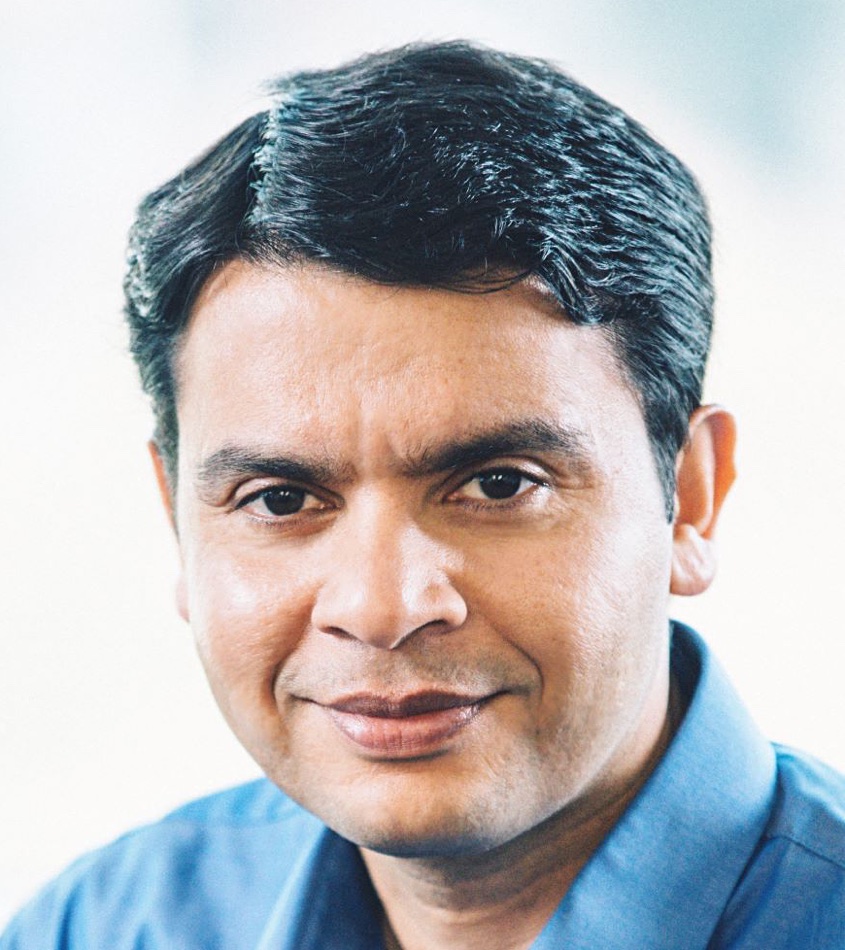Cohesity founder and CEO Mohit Aron has stepped aside to become the company’s CTO and chief product officer with ex-VMware COO Sanjay Poonen hired as the new CEO.

Poonen was president at SAP from 2006 to 2013, where he led SAP’s Applications and Platform Solutions & Sales teams, which contributed to SAP’s growth from $10 billion to $20 billion in revenues. He joined VMware as COO in August 2013 and his LinkedIn profile says he led VMware’s growth from $7 billion to $12 billion revenue – meeting and beating expectations in 18 quarters. Poonen left his VMware COO post in August last year, after colleague Rangarajan Raghuram was appointed CEO following Pat Gelsinger’s departure to Intel. He then took a year off, but has decided to get back in the enterprise exec saddle again.
Aron said in his statement: “As we scale, it is important to me to have a tighter focus on where I spend my time to have the greatest impact. I approached the board with the goal of finding a seasoned and proven executive that I could partner with to achieve our ambitious goals. I’m excited to work with Sanjay as we continue to grow and disrupt the $25 billion data management market.”
Two bloggers

In a blog Aron explained that his CEO and founder roles meant he had to operate with two mindsets, which created issues. “While I have strived to wear both the breadth and depth hats equitably, there is an inevitable tension in trying to balance them, particularly as the business scales. So, after consideration, I have decided to shift my focus to depth, with the board’s blessing.”
He added this: “I will continue to devote my time to ensuring that we have the greatest products and solutions in the industry as we disrupt the $25 billion market for data management with our next-gen approach. I’m very proud of what we have already achieved, and I know we’re only scratching the surface of what’s possible. More than ever, the world needs to safeguard and make the best use of its most valuable digital asset – data – and I remain dedicated to ensuring Cohesity is a pivotal enabler of that goal.”
We’ll come back to that in a moment.
A statement from Poonen said: “Cohesity sits at the intersection of three of the highest priority business issues today – cyber security, cloud, and data management – and is poised to become a major powerhouse with industry analyst firms naming the company a leader and one of the fastest growing in its category. … I look forward to leading this talented organization and driving even further success in strong partnership with Mohit and all Cohesians.”
Poonen wrote in his own blog that Cohesity “is a company whose value proposition, I can easily explain to my mom and kids: ‘We help companies and governments, protect their data, back it up, archive, search/analyze historical data, and of course, secure it from ransomware attacks.’ I’m super excited about the journey ahead.”
Cohesity has more than 3,000 customers. Four of the top 10 Fortune 500 companies, five of the top 10 US banks, and two of the top 5 global pharma organizations – as well as hundreds of federal/local organizations – are Cohesity customers.
His blog contains what we see as a key passage: “I’ve often told my GTM teams over the years, the world is made up of 5,000 large companies and five million small companies (the surface area of opportunity we were trained to attack at SAP and VMware, where our products became ubiquitous). As such, I see no reason why every company, government and organization – small and big – shouldn’t trust Cohesity with protecting their data! Everyone has data that needs to be backed up, protected from ransomware, archived, and analyzed for risk and insights. Legacy architectures were not optimized for an environment where data is today: in any cloud, any app, any device.”
This ties in with Aron’s view: “Consider the situation before VMware made virtualization commercially available: system resources were inefficiently used, they had limited scale, were difficult to manage, weren’t open to integration, and were very expensive. This is almost exactly the description we use to describe the legacy world of data management. Like VMware, we are bringing a radically new approach to an industry that has seen very little innovation – offering new value in security, simplicity, scale, efficiency, and much more. And with the right leadership and the right technology, I believe we have the right foundation in place to follow VMware’s trajectory.”
Comment
When VMware was founded, hypervisors were nascent and VMware grew and dominated a vastly growing market. Data management, aka data protection, is not nascent. It is mature, with large and well-established competitors. This, in our view, is not like VMware’s starting situation at all.
Think of Rubrik – a startup of similar vintage, size, scope and funding to Cohesity. In the data protection and management area we have Catalogic, Dell EMC, Druva, HYCU, Veeam, Veritas and many more, such as OwnBackup specializing in SaaS app protection.
This is not a world of dumb and stupid and complacent data protection companies. It is both a mature and a vibrant collection of quite fast-developing technology suppliers, all viewing ransomware protection and a multi-cloud approach as table stakes. And all with sticky software that slows down competitive supplier conversions and takeouts.
Poonen and Aron talk about “data”. It’s the new oil. But VMware applies to primary data and Cohesity (mostly) to secondary data. How can Cohesity become a general data management platform for both primary and secondary data? And should it aim to cover both? If not, then its data management scope gets limited and perhaps needs clarifying.
Also, in the secondary data field, much data – most of it probably – is not inside Cohesity’s market area, such as data warehouses and lakehouses. Should Cohesity get into this space? If it does not then its data management claims are, again, limited in scope.
Cohesity filed for an IPO in December last year. Aron will not be leading his company through that process. We think Poonen’s appointment implies that IPO filing is no longer current. He, and the board, will have new ideas about that. Aand they will involve, we are sure, building a substantial market lead over its competitors and clarifying its market differentiation.








